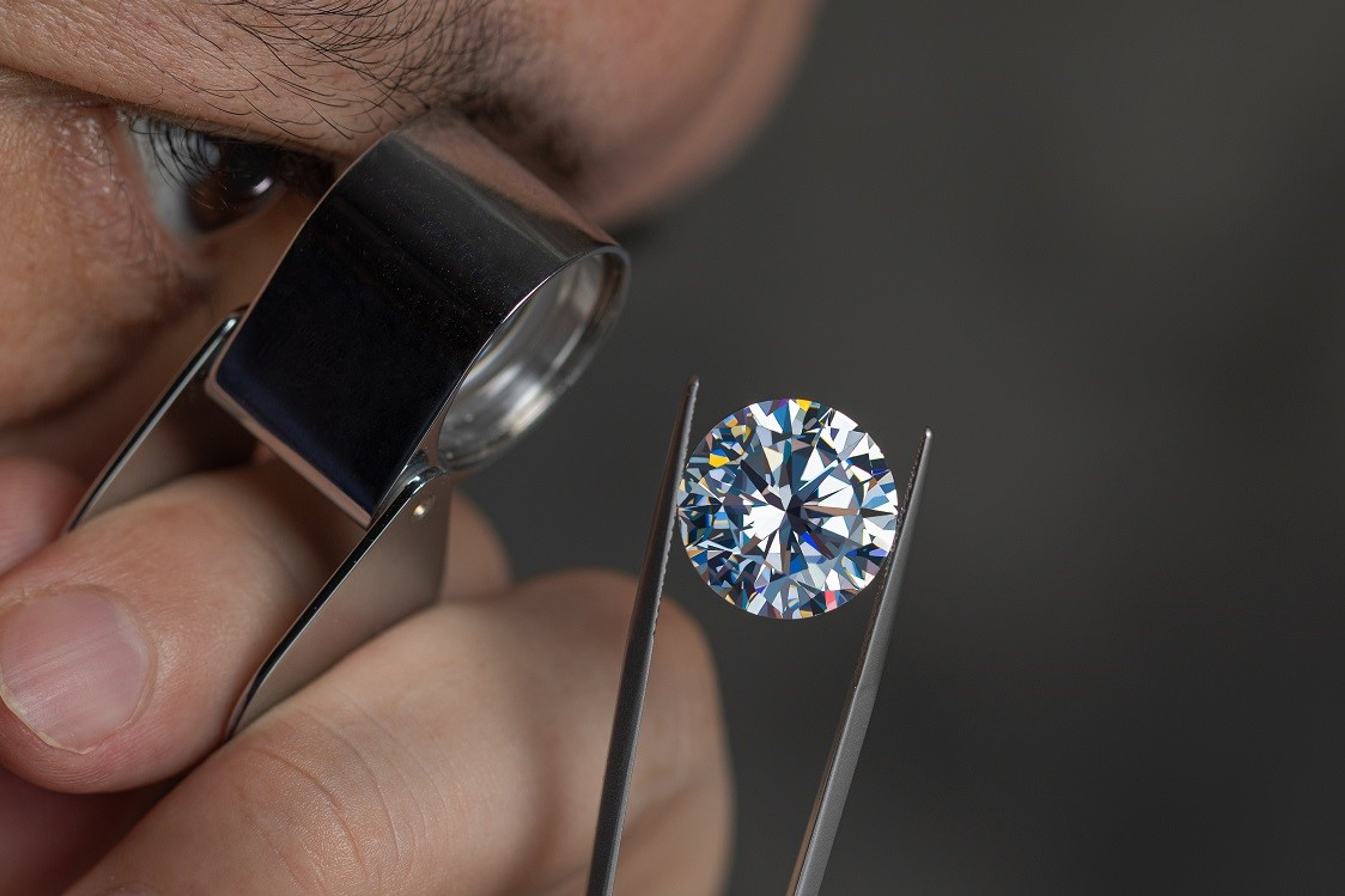Your partner is one in a million, and you’d never think of proposing with a diamond alternative, like moissanite or cubic zirconia. After all, diamonds are held to very high standards, and who could refuse their beauty and quality? But did you know that moissanites also go through a pretty rigorous grading process, just like diamonds? We’ll tell you more, and maybe you’ll consider giving them a second chance.
What is Moissanite?
At a quick glance, moissanite probably looks like a diamond’s twin, but it actually has its own special characteristics. For starters, it’s composed of silicon carbide, a mineral that was once considered rare and discovered in an Arizona meteorite crater about 130 years ago. So, you might hear moissanite referred to as a gemstone born from the stars!
Moissanite that you see glimmering in engagement rings settings is now grown in laboratories, and it has the ability to endure scratches. In fact, it scores a 9.25 out of 10 on the Mohs Hardness Scale, a tool for measuring the scratch resistance of diamonds, gemstones and other minerals. This makes moissanite a great choice for everyday jewelry, especially pieces that are exposed to more wear and tear, such as rings.
How are Diamonds Graded?
If moissanites are durable and look similar to diamonds, do you need to worry about the grades they receive? The short answer is yes. Each gem is different, and grading will play a significant role in helping you choose the perfect stone for your partner. Better grades also result in more valuable stones.
But before we jump into moissanites, you’ll want to understand diamond grading. Once diamonds form, gemologists carefully inspect four important characteristics (aka the 4 C’s): cut, color, clarity and carat weight. While all of these aspects work together to produce a stone’s overall look, the cut is deemed the most important quality, as this affects sparkle.
It’s also worth noting that these diamond characteristics have separate grading scales, each developed by the Gemological Institute of America (GIA). For example, the clarity scale measures a gem’s internal and external imperfections. And when it comes to color, diamonds are ranked based on their lack of color, since hints of yellow and brown hues will limit their sparkle.
How are Moissanites Graded?
So, how do moissanites fit into all of this? Even though they’re technically diamond alternatives, they’re basically graded on the same scales. There’s plenty of misinformation surrounding moissanite grading, so we’ll share processes used by Charles & Colvard, an industry leader for these gems.
GIA’s diamond color scale features letters of the alphabet, starting with D and ending with Z. That means stones given D rankings are colorless, while Z-rated gems often have light yellow or brown tones. Charles & Colvard moissanites typically fall into one of three categories: colorless (D-E-F range), near colorless (G-H-I range) and faint hues of color (J-K range). Even though these stones weigh less than diamonds, experts say they’re cut to the exact same dimensions as diamond carat weights. You’ll see moissanite weight listed as “diamond equivalent weight” or DEW, so shoppers can understand how the gems compare.
To give you an idea of how the grading procedures work, Charles & Colvard evaluates each stone four times. The first review takes place after a gem is cut and two more occur as the gems are being cleaned and prepped for sale. Loose stones are usually inspected under special lighting to check for any unwanted hints of color. A trained gemologist then issues the final ranking. Surprisingly, each inspection only takes about 15 seconds!
*Pro Tip: What if you find moissanite featuring another color, such as blue or green? It’s possible! These are called “fancy color” gems, and they follow a different color grading scale.
Which is Better: Diamond or Moissanite?
We’ll leave that decision up to you! Do some research and make sure to consider your budget and partner’s taste before moving forward. In the meantime, here are a few more tips to help you decide.
● Since moissanite is grown in laboratories vs. extracted in mines, like natural diamonds, it’s a more eco-friendly option. The creation process causes less damage to surrounding land and natural resources.
● Moissanites have a higher rating when it comes to fire dispersion and the brilliance refractive index. That means moissanites reflect light better than diamonds and create more colored sparkle.
● If you’re looking to save a few bucks, moissanite is an economical choice. It often costs 70% less than natural diamonds!
Have a question? We can help!
Gage Diamonds is Chicago's premier jewelry showroom and online retailer of engagement rings, wedding bands, and fine jewelry. We offer a selection of dazzling Gage Select and Charles & Colvard moissanite rings.
We’re committed to helping you find the ring of your dreams. For inspiration, browse our website or set up an appointment with a member of our trusted staff at our in-person showroom.
We offer no-credit-needed financing – apply and get your approval within 24 hours!
Pay over time, because love shouldn’t wait.

